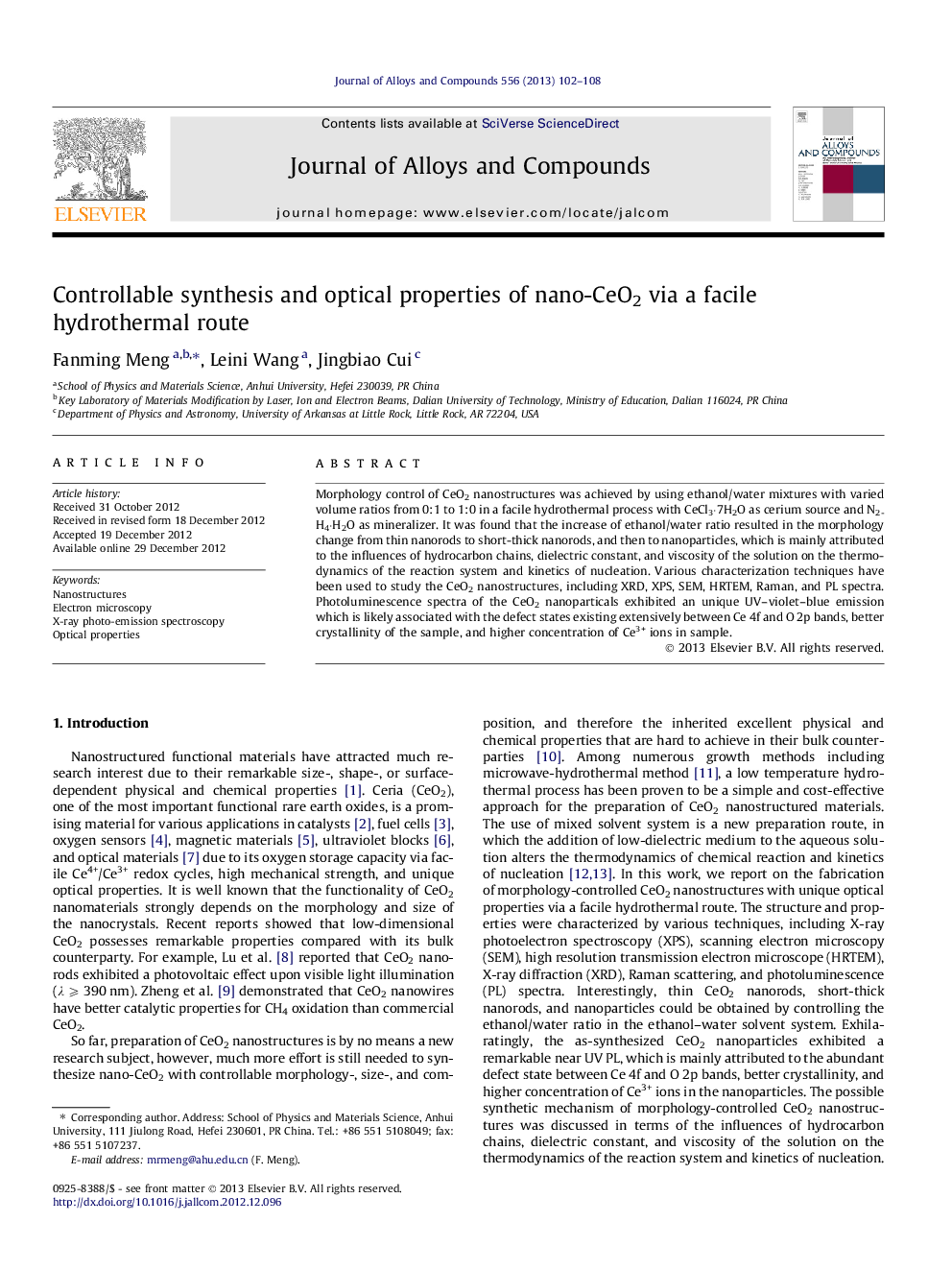| Article ID | Journal | Published Year | Pages | File Type |
|---|---|---|---|---|
| 1614678 | Journal of Alloys and Compounds | 2013 | 7 Pages |
Morphology control of CeO2 nanostructures was achieved by using ethanol/water mixtures with varied volume ratios from 0:1 to 1:0 in a facile hydrothermal process with CeCl3⋅7H2O as cerium source and N2H4⋅H2O as mineralizer. It was found that the increase of ethanol/water ratio resulted in the morphology change from thin nanorods to short-thick nanorods, and then to nanoparticles, which is mainly attributed to the influences of hydrocarbon chains, dielectric constant, and viscosity of the solution on the thermodynamics of the reaction system and kinetics of nucleation. Various characterization techniques have been used to study the CeO2 nanostructures, including XRD, XPS, SEM, HRTEM, Raman, and PL spectra. Photoluminescence spectra of the CeO2 nanoparticals exhibited an unique UV–violet–blue emission which is likely associated with the defect states existing extensively between Ce 4f and O 2p bands, better crystallinity of the sample, and higher concentration of Ce3+ ions in sample.
► The increase of ethanol/water ratio results in the morphology change from thin nanorods to short-thick nanorods, and then to nanoparticles. ► Photoluminescence spectra of the CeO2 nanoparticals exhibit an unique near UV emission. ► Morphology control of nano-CeO2 is achieved, which provides an effective way to tune the materials microstructure and optical properties.
